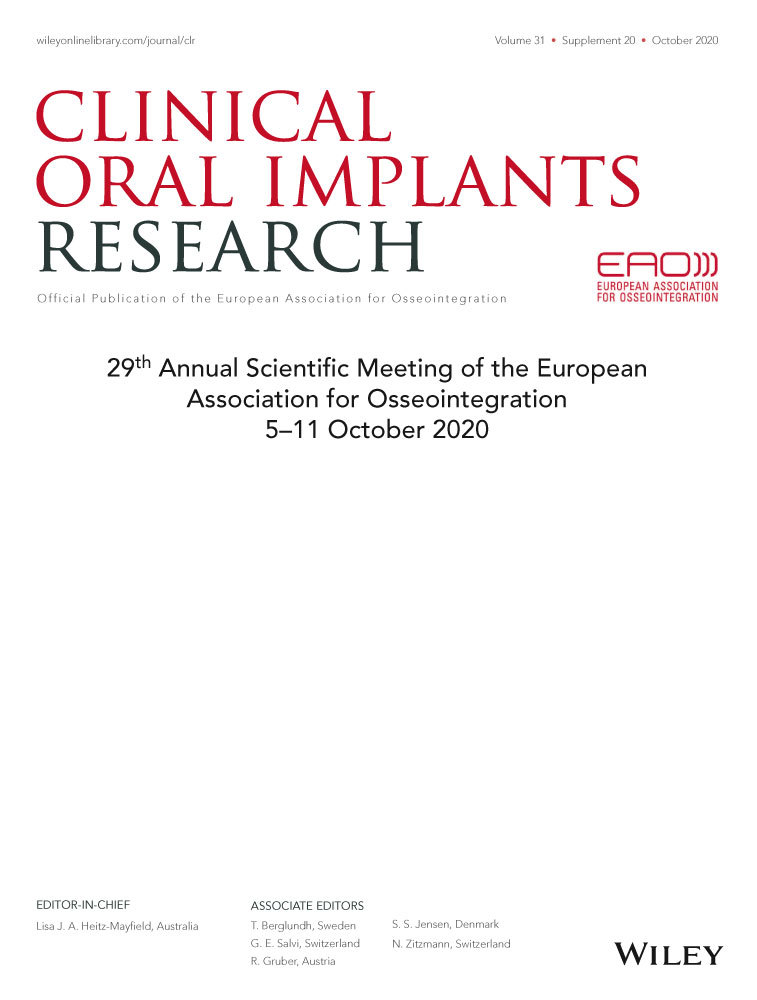A comparison of iliac crest and lateral border of scapula grafts in cases of severe ridge atrophy
SCWC8 ORAL COMMUNICATION CLINICAL RESEARCH – SURGERY
Background: Ridge reconstruction with extraoral bone grafts is a reliable method in patients with severe alveolar atrophy prior to implant placement. Iliac crest is the most frequently used harvesting site providing abundant bone, associated with high resorption rate and possible painful walking postoperatively. The lateral border of scapula is an alternative grafting area, provided large amounts of cortical and cancellous bone, that showed less resorption rate and postoperative morbidity.
Aim/Hypothesis: The aim of this clinical study was to compare treatment protocol, complication rate and early functional outcomes in patients with severe ridge atrophy reconstructed with lateral border of scapula and iliac crest grafts.
Materials and Methods: A total of 40 partially or fully edentulous patients with severe ridge atrophy were reconstructed with autogenous iliac crest grafts in 20 cases and lateral border of scapula block in 20 patients. Twenty-eight patients had simultaneous sinus-lifting and onlay bone grafting, in twelve cases onlay grafting was performed. Complication rate, post-operative morbidity and ambulation-time were analyzed. Five to 6 months after augmentation, patients underwent cone beam computed tomography and receive dental implants. All blocks were checked for the Barone success criteria of bone grafting. Three months later, healing abutments were placed and prosthetic rehabilitation was performed.
Results: An average graft dimensions were for iliac crest 5.8 ± 3.3 cm in length, 3.9 ± 1.1 cm in height and 1.4 ± 0.7 cm width, for lateral bored of scapula block - length 6.3 ± 2.3 cm, height 2.3 ± 0.7 cm, and width 1.2 ± 0.5 cm. Mean grafting stage time was 40.3 ± 15.6 min for iliac crest and 66.4 ± 19.9 min scapula. At the recipient site postoperative complications occurred equally in both groups. Two weeks after iliac crest harvesting 4 patients had painful walking and in 1 case sensory disturbance was detected. After lateral border of scapula grafting no skin sensory disturbance occurred, but 1 patient had discomfort during arm movements 2 weeks postoperatively. At the time of implant placement, the dimensions of lateral border of scapula reconstructed ridge was 12.3 ± 2.0 mm and 6.9 ± 1.6 mm in height and width, respectively. Alveolar height after iliac crest grafting was 11.5 ± 0.4 mm and width 6.5 ± 0.4 mm and grafts from iliac crest showed higher resorption. Implant survival rate was similar in both groups.
Conclusions and Clinical Implications: In patients with severe ridge atrophy both lateral border of scapula and iliac crest bone-grafting approaches are reliable and successful techniques prior to implant placement. Lateral border of scapular showed less postoperative morbidity and significantly lower resorption rate during early healing phase compare to iliac crest. But, the surgical approach of iliac crest harvesting is easier; therefore, it is more commonly used.
Keywords: lateral border of scapula, iliac crest, severe bone atrophy, ridge reconstruction, autologous bone grafts.




